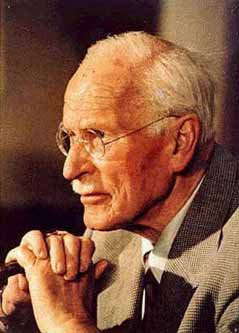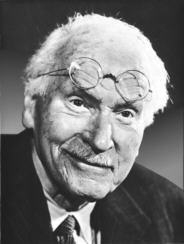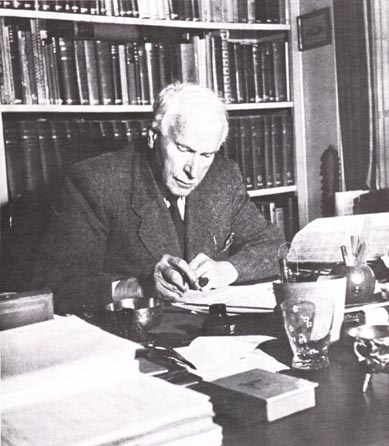
Carl Gustav Jung (1875-1961) is one of the most important figures of transpersonal psychology, and also one of most considerable sinologists (sinology = science that studies the history, the language, the literature and the culture of the Chinese people) of this century (also in the domain of mythology and regarding the interpretation of dreams) and a great connoisseur of esoteric currents like Christian Gnosticism, Tantrum, Taoism, I-Ching and Alchemy.
C.G. Jung started his studies on human motivation at the beginning of the 20th century, creating the psychoanalysis school known under the name of The School of Analytic Psychology. He was contemporary with the Austrian doctor Sigmund Freud and at the beginning he collaborated with him. Later on, he started to explore his own theories, among which the exploitation of personality types. According to Jung, there are two basic personality types that alternate in a balanced way, at normal individuals: extrovert and introvert. Jung also considered that the personal unconscious is formed of the personal unconscious (repressed ideas and feelings that manifest along the individual’s life) and the collective unconscious (those feelings, ideas and memories inherited or shared by the entire humanity).
Carl Gustav Jung estranged from his master and aimed towards the spring of ancient esoteric traditions in order to quench his thirst. Jung said that through dreams the Human Being can know its True Personality, and that also through dreams there is the possibility to receive messages from the future. In his book ‘Memories, Dreams, Reflections’ he says how he once dreamt an arctic, frosty wind that deserted the European fields and covered them with iron, all the region becoming uninhabited and without vegetation. This happened in June 1914, two months before the beginning of the First World War.

Between 1912 and 1919, after the separation from Freud, Jung was the subject – rather passive than active, it seems – of an almost uncontrollable image eruption coming from what he called the Collective Unconscious. These were – in his personal secretary’s opinion, Aniela Jaffe: ‘the raw material that made possible the intellectual creation to which he dedicated the rest of his life’.
Searching for historical antecedents to what he was living during that period and to the ‘psychological’ intuitions to which he was reaching, Jung got between 1918 and 1926, in the symbolical world – apparently chaotic – of Christian Gnosticism. Later on he will find the bases of historical support in Alchemy, up to the point where he was convinced that his Analytic Psychology was directly linked with alchemy and that his ‘psychotherapeutic’ and revitalizing method of symbols, called ‘Active Imagination’, was an improved form of the alchemist method ‘Imaginatio vera et no Phantastica’.
Carl Gustav Jung – the Alchemist
In 1928 he got in the possession of a book of Chinese alchemy that served him to associate his interior search with that of the alchemists. This book is called ‘Mystery of the Golden Blossoming’, whose oral tradition goes up to the 8th century BC.
I practically devoured the manuscript, as its content came to corroborate my ideas about the mandala and the route of a circle’s circumference. The contact with this work ended my isolation, because through its pages I got to know my ideological precursors and to relate to them, confesses Jung in his memoirs.

From that moment on, Jung will sink in Alchemy, getting to have one of the richest collections of books and manuscripts in the world, counting more that two hundred volumes. Almost all this alchemistic library was in his possession in 1940. Knowing Latin and Greek facilitated the reading and the intense study of these texts. ‘The alchemists’ experiences were my own experiences and their world was, in a certain measure, my own world’, confessed Jung.
The first public speech on the parallels existing between Analytic Psychology and Alchemy made them known in two conferences held in different congresses at Erano, in Ascona (Switzerland). ‘Dream Symbols of the Individualization Process’ and ‘Alchemic Concepts Regarding Salvation’ that is the basis on which his work ‘Psychology and Alchemy’ is built.
Except the works previously quoted, alchemist references are often found in Jung’s work, highlighting his prologue to the ‘Mystery of the Golden Blossoming’ (1929) in which he presents the process of individualization and the archetype of the mandala, and in ‘Symbolism of the Spirit’ (1948) in which he insists on the symbolism of the Philosophical Mercury.



